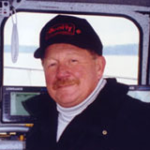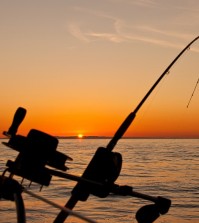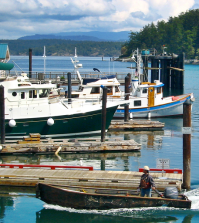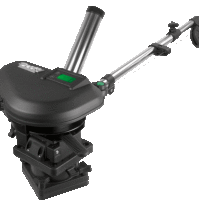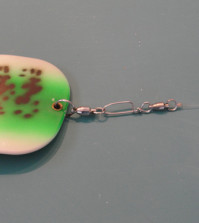Review: Roto Chip
I recently gave a talk at the Kitsap Poggie Club. The subject for the evening was this summer’s upcoming Chinook season. When we covered downrigger fishing methods, one thing that really surprised me was how many anglers in attendance hadn’t seen or used the Pro-Troll Roto Chip. The Poggie Club members are ardent bait fisherman, so I was unusually surprised.
What is a Pro-Troll Roto Chip?
It’s a bait holder, that is extremely easy to use and very effectively gives your bait a tight roll that mimics a wounded baitfish. The Roto Chip can be used with either herring or anchovy.
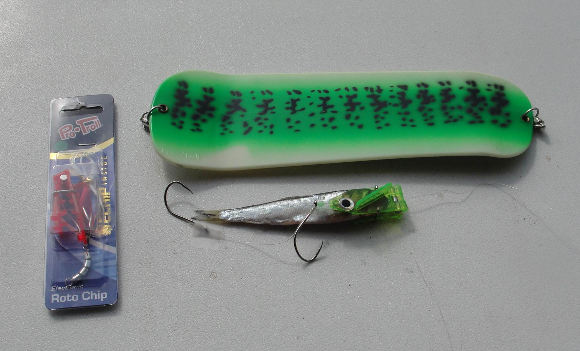 The Roto Chip comes in 2 sizes and 11 colors. Size 5A is for bait or strip 4″ to 5″ long. Size 5B (The Big Fin Model) is for bait 6″ to 7″ long. Each has a fin that imparts a tight rolling action to your baitfish or strip. Each is equipped with tandem barbless hooks and an Echip that triggers harder strikes and results in better hook-ups.
The Roto Chip comes in 2 sizes and 11 colors. Size 5A is for bait or strip 4″ to 5″ long. Size 5B (The Big Fin Model) is for bait 6″ to 7″ long. Each has a fin that imparts a tight rolling action to your baitfish or strip. Each is equipped with tandem barbless hooks and an Echip that triggers harder strikes and results in better hook-ups.
So, how do we use them? Simply slide the wire clamp to the forward end, allowing the bait holder to open. Put the head of the bait or strip into the head as straight as possible (you don’t have to be perfect). Slide the wire clamp to the rear and the teeth inside the Roto Chip will hold the bait in place.
The Roto Chip comes with 7 feet of 40 lb monofilament leader. When trolling bait by itself, this leader length is fine. When used behind an 11-inch flasher, reduce this length to 48 – 52 inches for the best action. If you are using an 8-inch flasher, you should use a 36 – 40 inch leader length.
Both the Roto Chip 5A and 5B have tandem barbless hooks. Don’t put a hook into the bait. Let them run free. This will result in a more erratic action and better hook-ups. Keep your hooks sharp and sharpen them often.


